These Haffenreffer & Company beer bottles have been in the collection for many years, unopened. In preparation for the museum move, the bottles needed to be cleaned and rehoused for safe transport.
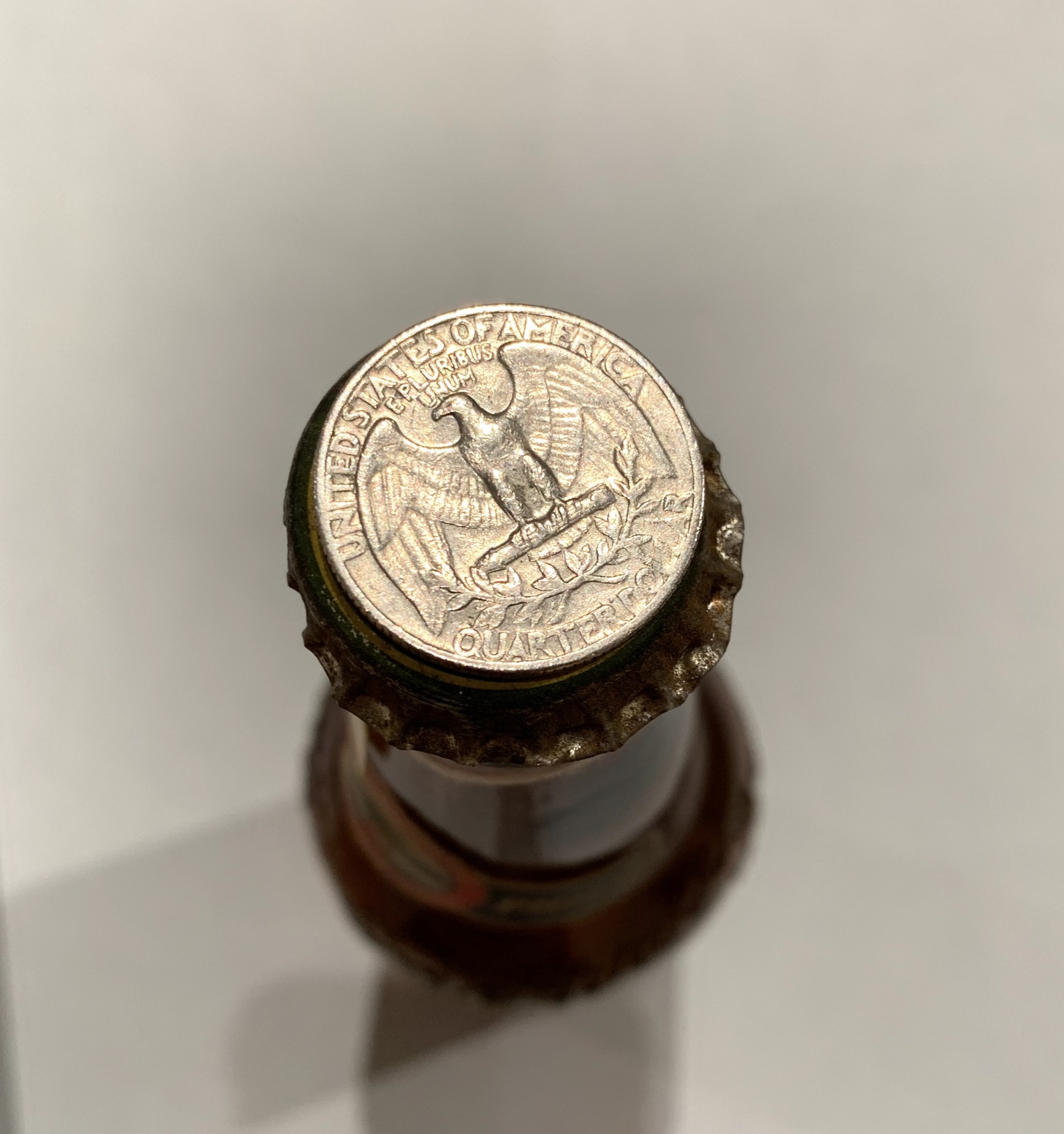 I removed the bottle caps using a quarter and a wing corkscrew. This prevents the lever from creating a crease across the top. A few light pulls upward around the sides in different spots also prevents the teeth from flaring out.
I removed the bottle caps using a quarter and a wing corkscrew. This prevents the lever from creating a crease across the top. A few light pulls upward around the sides in different spots also prevents the teeth from flaring out.
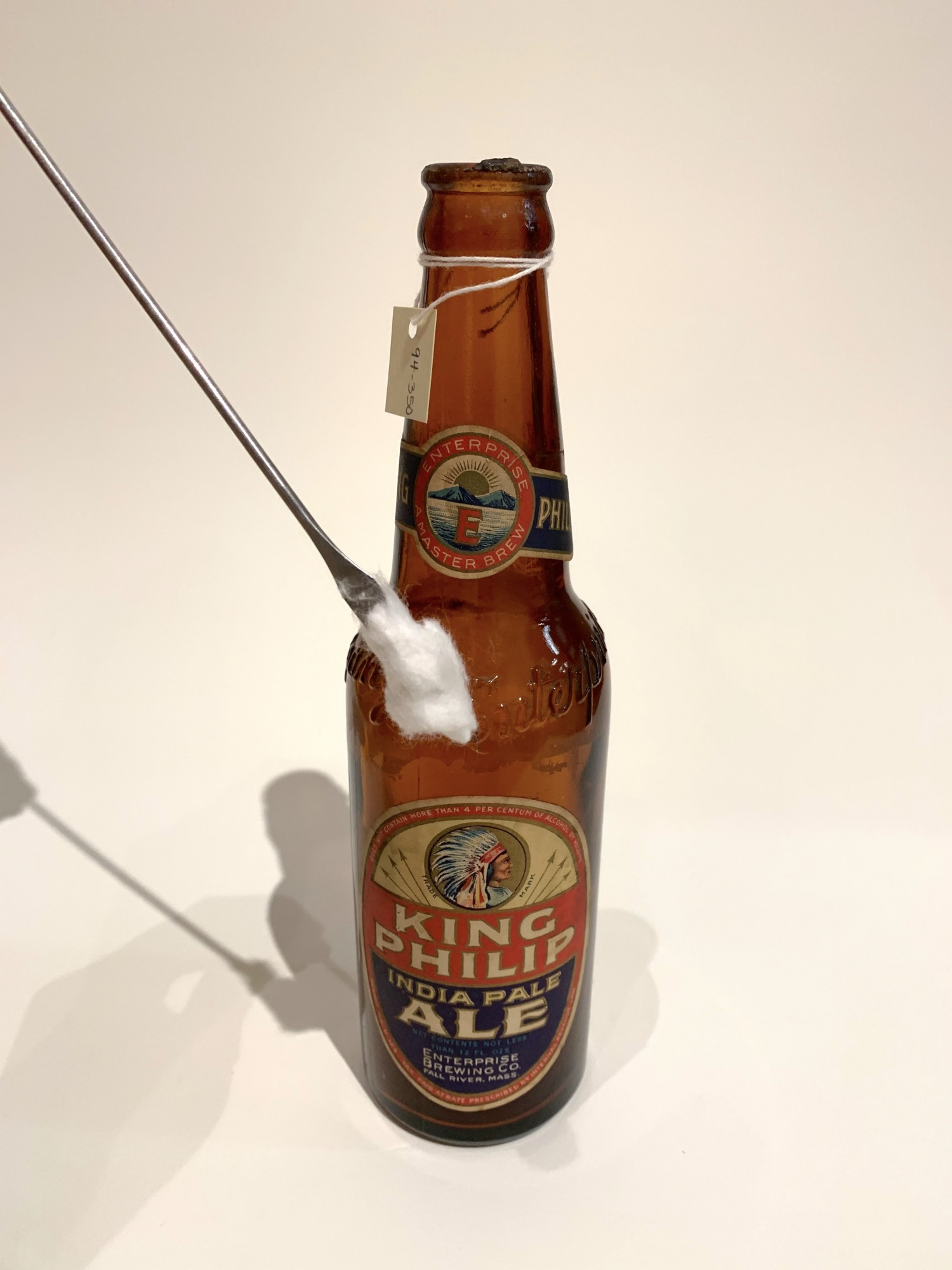 Once the bottle caps were removed, the bottles needed to be emptied and cleaned. Because of the continued fermentation and oxidation of ethanol in the bottles, malt vinegar was produced. The liquid was easy to pour out; however, a slimy, black coating formed (a glob of yeast and bacteria common in fermentation processes, like in Kombucha) that was a bit more difficult to remove.
Once the bottle caps were removed, the bottles needed to be emptied and cleaned. Because of the continued fermentation and oxidation of ethanol in the bottles, malt vinegar was produced. The liquid was easy to pour out; however, a slimy, black coating formed (a glob of yeast and bacteria common in fermentation processes, like in Kombucha) that was a bit more difficult to remove.
First, I rinsed the bottles with warm water to break up some of the scoby. I was careful not to let water drip on bottle labels in order to preserve them. I used distilled water to break up the residue and made cotton swabs to wipe them clean. For extreme buildup, I let distilled water sit inside for thirty minutes before rinsing again with warm water.
For rehousing, I created an interlocking grid so the bottles would be separated and contained. The top rows of ethafoam lift off, making it easier to access individual bottles
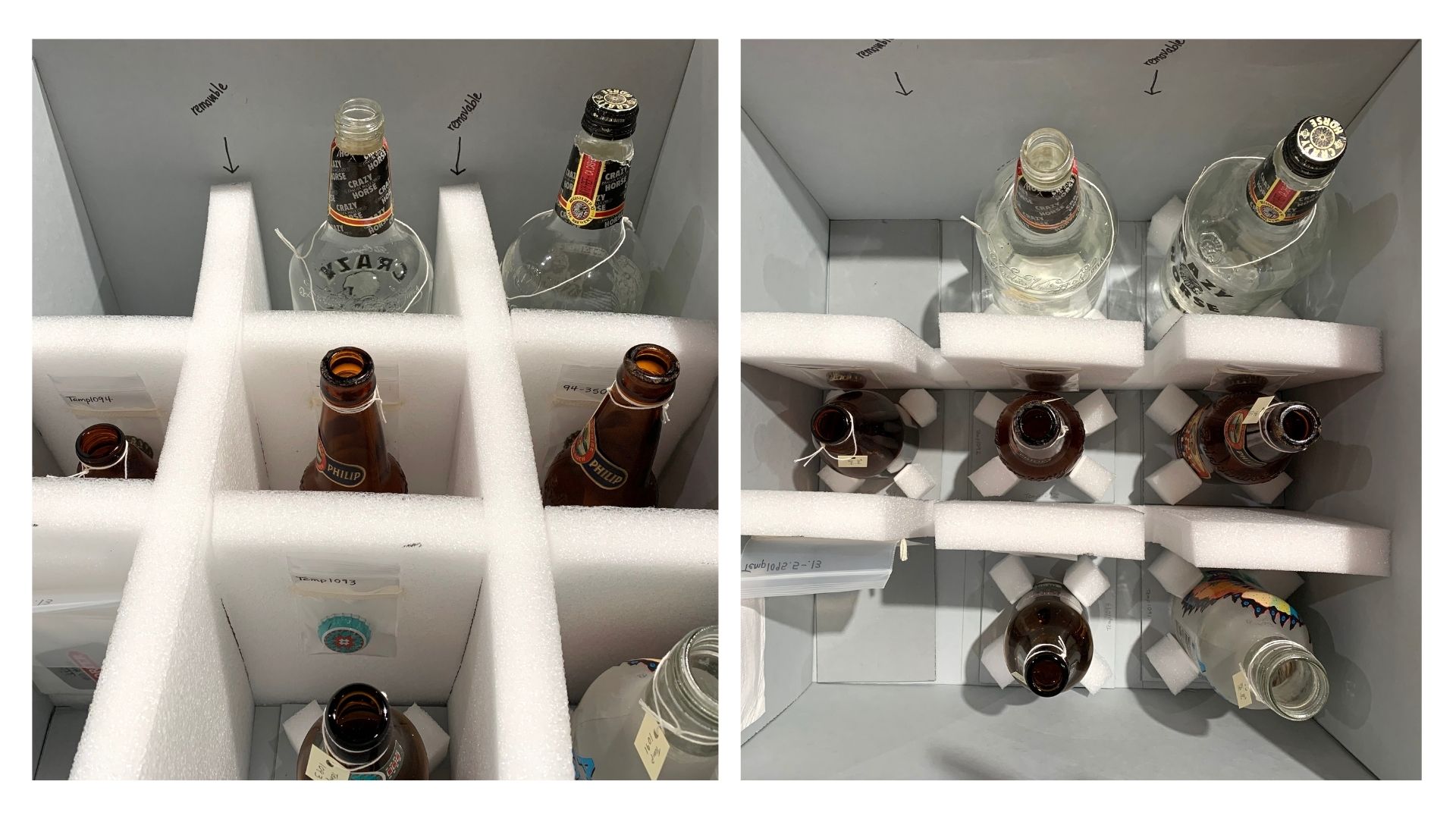
Each bottle also has a small mount in order to prevent movement and tipping within the grid.
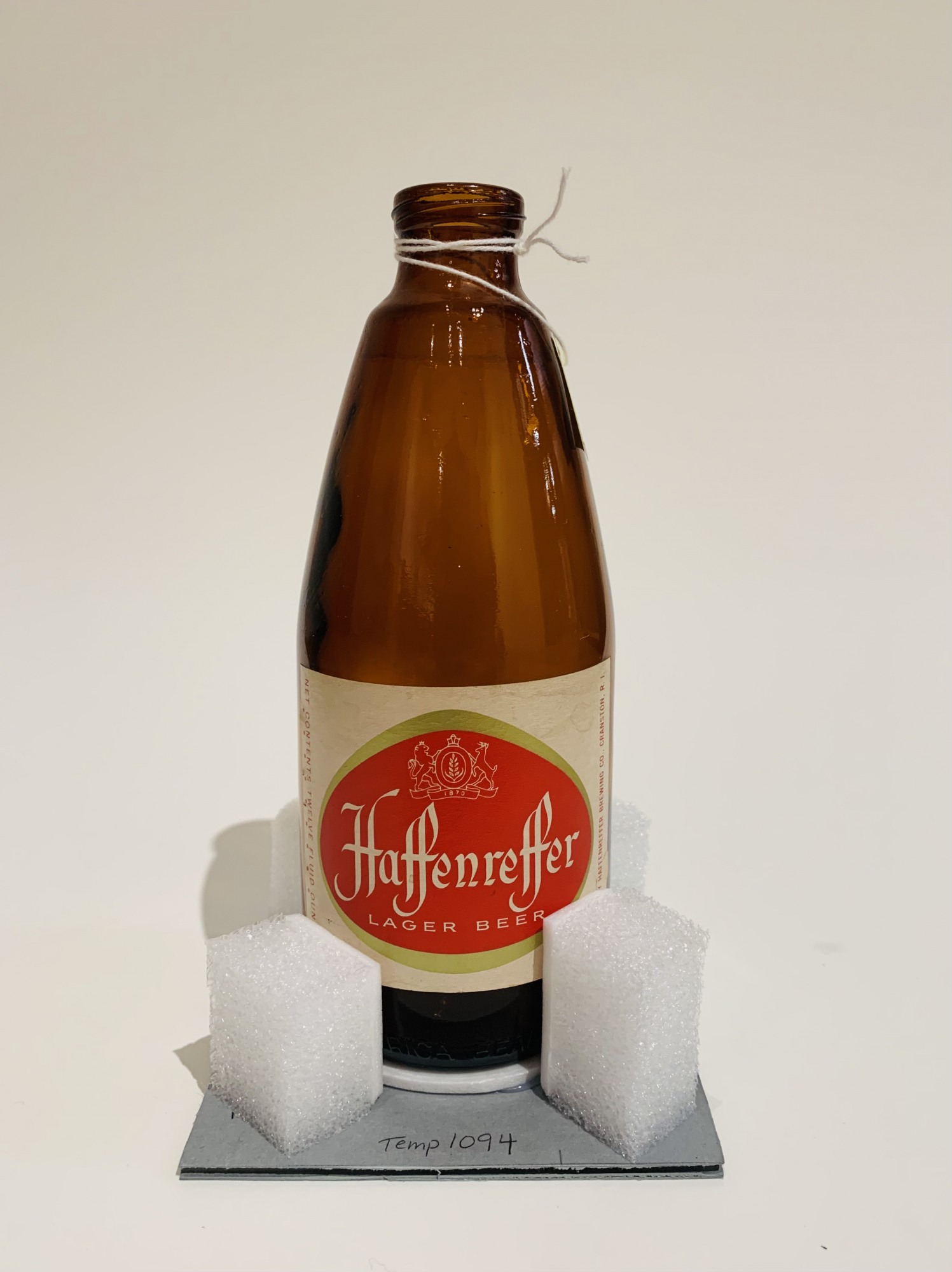
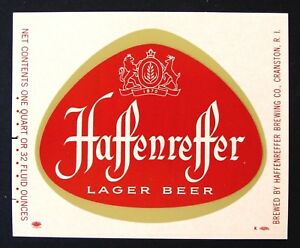
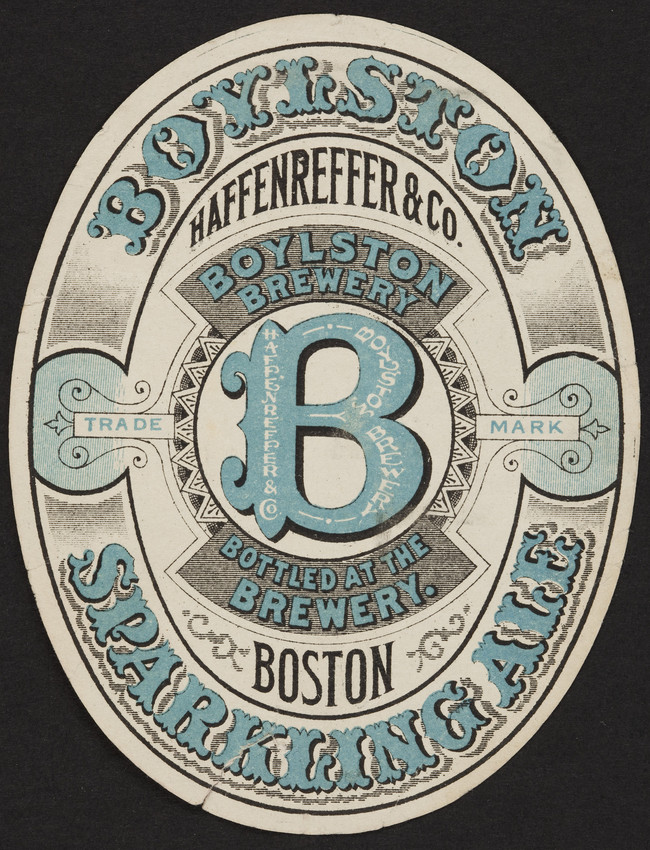 I was curious about the Haffenreffer brewing history, and did some research to place these bottles in context within the collection. Rudolf Haffenreffer, Sr. was a brewer, maltster, and barrel-maker who worked in Germany and France before immigrating to Boston in 1868. He established Boylston Lager Beer Brewery in 1871 which eventually became Haffenreffer and Company.
I was curious about the Haffenreffer brewing history, and did some research to place these bottles in context within the collection. Rudolf Haffenreffer, Sr. was a brewer, maltster, and barrel-maker who worked in Germany and France before immigrating to Boston in 1868. He established Boylston Lager Beer Brewery in 1871 which eventually became Haffenreffer and Company.
Rudolf Haffenreffer, Jr. was also interested in brewing; attending the U.S. Brewers Academy in New York and completing Fermentation courses at MIT. He founded Old Colony Brewing and later took control of King Philip and Enterprise breweries before moving to Bristol, RI.
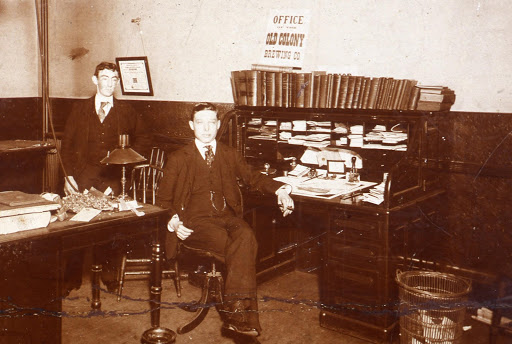
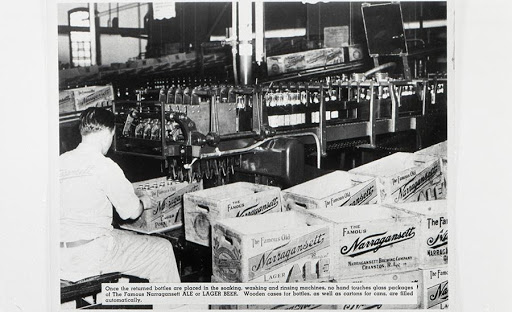 Haffenreffer Brewing Company survived Prohibition by switching production to low-alcohol beers. Afterwards, Haffenreffer, Jr. became president and chairman of Narragansett Brewing Company. Later, he licensed several beers to Narragansett when the company closed in 1965.
Haffenreffer Brewing Company survived Prohibition by switching production to low-alcohol beers. Afterwards, Haffenreffer, Jr. became president and chairman of Narragansett Brewing Company. Later, he licensed several beers to Narragansett when the company closed in 1965.